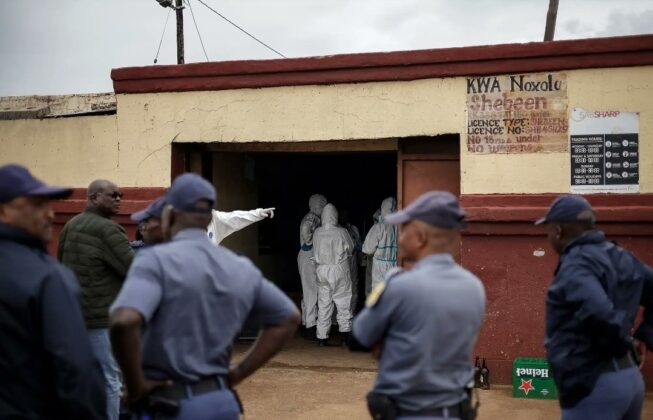
Indiia and Pakistan agree to ceasefire along the Line of Control in Kashmir, but recent reports indicate Pakistan has violated the agreement.
India and Pakistan have agreed to a ceasefire along the Line of Control in Kashmir, with both countries committing to strict observance of all agreements and understandings. The agreement was reached after discussions between the Director Generals of Military Operations of India and Pakistan, who reviewed the situation along the Line of Control and agreed to address each other’s core issues and concerns. The ceasefire, which took effect on February 25, 2021, aims to achieve mutually beneficial and sustainable peace along the borders. Both sides have pledged to utilize existing mechanisms of hotline contact and border flag meetings to resolve any unforeseen situations or misunderstandings.
This agreement is significant, given the history of tensions between the two nations. Since 2003, when the first ceasefire agreement was signed, there have been over 13,500 ceasefire violations, resulting in the deaths of 310 civilians and injuring 1,600. The recent spike in tensions was triggered by a militant attack in Indian-administered Kashmir that killed 26 people, which India blamed on a Pakistan-based group, while Pakistan denied any involvement.
The agreement has been welcomed by the international community, with hopes that it will lead to a lasting peace between the two nuclear-armed nations. However, some commentators have expressed skepticism, citing the long history of failed agreements between India and Pakistan.
India and Pakistan have agreed to strictly observe all agreements and understandings related to the ceasefire along the Line of Control and other sectors. This decision was made after discussions between the Director Generals of Military Operations of both countries, who reviewed the situation and agreed to address each other’s core issues and concerns to achieve mutually beneficial and sustainable peace along the borders.
The agreement aims to reduce tensions and prevent further violence. Both sides will utilize existing mechanisms of hotline contact and border flag meetings to resolve any unforeseen situations or misunderstandings. The ceasefire agreement has been welcomed by the international community, with hopes that it will lead to lasting peace between the two nuclear-armed nations.
Indian Prime Minister Narendra Modi has warned that his country will respond strongly to any future terrorist attacks, emphasizing that terrorism and trade talks cannot coexist. This stance aligns with US President Donald Trump’s comments that trade with India and Pakistan depends on ending the conflict.
Pakistan’s Prime Minister Shehbaz Sharif expressed commitment to peaceful negotiations, particularly regarding the water issue. Sharif described Pakistan’s actions as those of a “responsible state” and emphasized the importance of national honor and dignity.
India and Pakistan’s top military officials discussed the ceasefire agreement, focusing on refraining from aggressive action and reducing troops from the borders and forward areas. The Director Generals of Military Operations from both countries agreed to stop all firing and military action from land, air, and sea, starting from 5 pm on the day of the agreement.
This development comes after a series of intense military exchanges between the two nations, sparked by a militant attack in Indian-administered Kashmir that killed 26 people. The recent conflict saw both countries engaging in cross-border shelling and aerial strikes, with each side claiming to have targeted the other’s military installations. India reported striking nine terrorist bases in Pakistan and Pakistan-administered Kashmir, killing over 100 militants, while Pakistan claimed to have targeted 26 military facilities in India. The conflict resulted in dozens of deaths on both sides.
US President Donald Trump announced the ceasefire, stating it was time to stop the aggression that could have led to significant death and destruction. Both India and Pakistan declared military victories after the ceasefire came into effect. The agreement also paved the way for talks between the two countries on a broad set of issues at a neutral site, with US Secretary of State Marco Rubio and Vice President JD Vance facilitating the negotiations.
In the aftermath of the agreement, India announced the reopening of 32 airports that were previously closed due to safety concerns. The situation remains fragile, but the ceasefire is seen as a crucial step towards reducing tensions between the two nuclear-armed nations.
However, recent reports indicate that the ceasefire agreement has faced challenges, with Pakistan violating the agreement within hours of it coming into effect. On May 11, 2025, Indian officials reported gunfire and drone activity along the Line of Control. India’s Foreign Secretary Vikram Misri stated that the Indian Army was retaliating after Pakistan broke the ceasefire deal.



